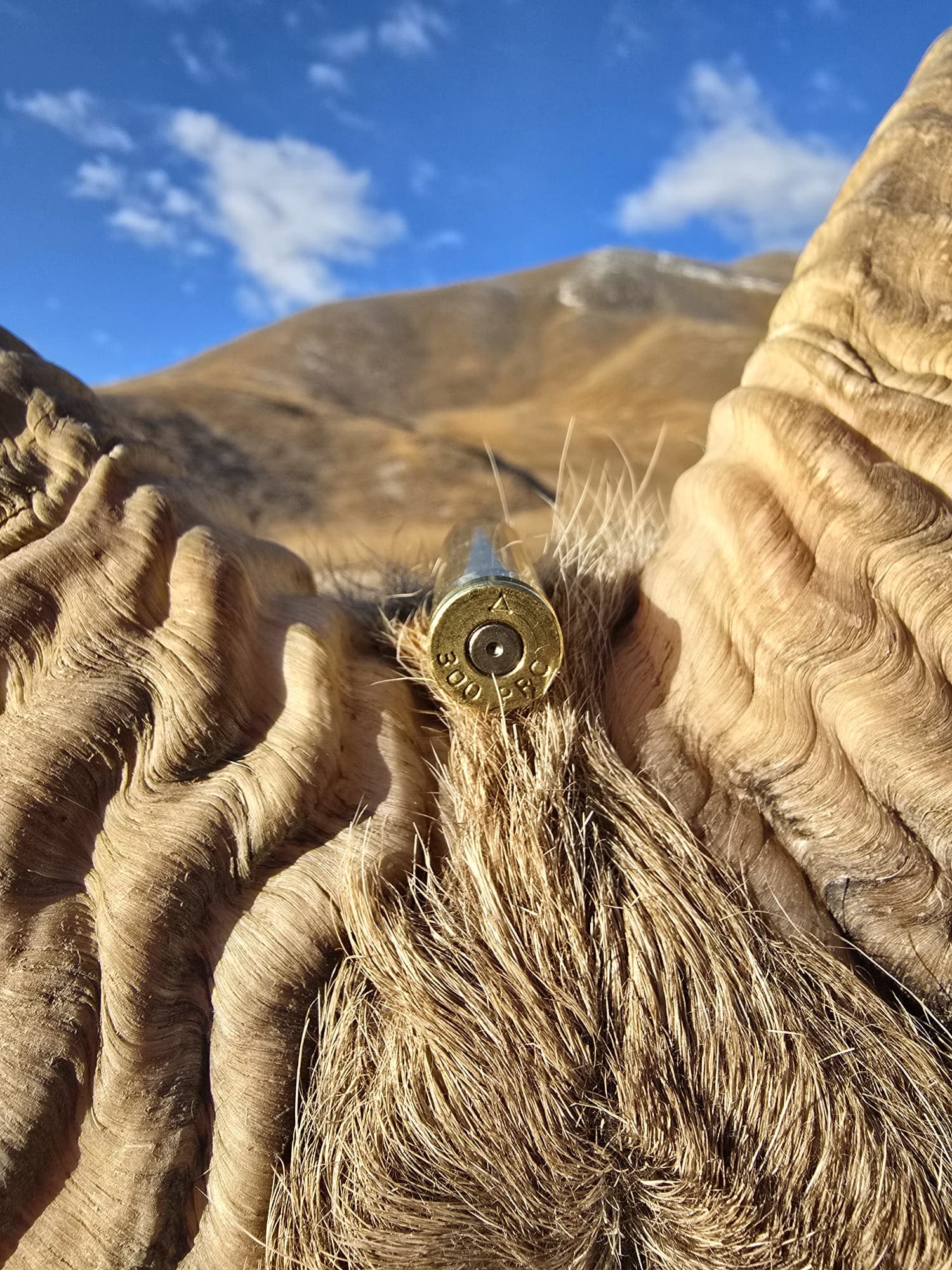I recently embarked on a mid-Asian Ibex hunt in Kyrgyzstan with Kyle Hanson from Outdoors International. As a passionate mountain hunter and experienced precision rifle competitor, hunting in Central Asia’s rugged terrain was a perfect challenge. Over the course of the hunt, we successfully harvested four Ibex at distances ranging from 450 to 750 yards. Our guides, impressed by our accuracy, remarked that shooting proficiency is often the biggest limitation for hunters in these conditions.
After many conversations about optimal rifle setups and training for such hunts, Kyle and I decided to compile a guide for preparing shooters to excel in these demanding scenarios. Here’s what you need to know.

What to Expect
Hunting Ibex and Marco Polo Argali in Kyrgyzstan is a thrilling challenge, as these animals are incredibly wary and inhabit some of the most rugged, open terrain imaginable. These species thrive in steep, rocky country where their agility and sharp senses give them an edge over predators—and hunters.
The game density in Kyrgyzstan is truly remarkable. On our hunt, it wasn’t uncommon to see multiple herds of 50 to 100 Ibex in a single day. However, the abundance of animals also presents a unique challenge: with so many eyes on alert, getting within shooting distance requires careful planning, patience, and stealth.
Most stalks involved riding horses up the backside of a ridge opposite the side of the canyon the animals were on. As a result, nearly all shooting scenarios are cross-canyon shots at varying angles. Based on conversations with guides and other hunters, 90% of shots on these hunts are taken at distances between 400 and 700 yards.
Adding to the difficulty, the terrain rarely allows for flat prone shooting due to its steep and rocky nature. For example:
- I shot my Ibex at 505 yards from a kneeling position, with my rifle rested on a shooting bag perched atop a rocky point.
- Another hunter in our group harvested his Ibex at 740 yards, firing uphill at a 19-degree angle in an avalanche chute.
These examples highlight the importance of being prepared for long-range shots in windy conditions and from awkward shooting positions. If you’re heading to Kyrgyzstan, or anywhere in mid-Asia for that matter, practice shooting from uneven surfaces and unusual angles to build the confidence and skills you’ll need for success in this extraordinary hunting environment.
By anticipating these challenges and training accordingly, you’ll be better equipped to take advantage of the incredible opportunities this hunt has to offer.

Equipment Selection
Rifle Setup
When preparing for a mid-Asia hunt, having the right rifle setup is crucial for success in the demanding terrain and challenging shooting conditions. Below are the key considerations for configuring your rifle:
- Rifle: Choose a precision rifle in a lightweight stock or chassis capable of shooting sub-MOA groups. Equipping your rifle with an arca rail is highly recommended for secure tripod shooting, as flat, stable positions are rare in this rugged environment. Additionally, ensure your rifle has a sling, as you’ll likely be carrying it on horseback.
- Muzzle Device: A muzzle brake or suppressor is essential for managing recoil, allowing for quicker follow-up shots and better accuracy in less-than-ideal positions. If possible, bring a suppressor, as it can make a critical difference in getting a follow-up shot after a miss. However, check with your guides ahead of time to ensure this is permitted.
- Rifle Scope: Opt for a first focal plane scope with an exposed elevation turret and a reticle that supports wind holds. Both MOA and MIL systems work, so select whichever you’re most comfortable using. If using a burned yardage turret, make sure your ballistic solver provides elevation adjustments in yards or that the turret includes MOA/MIL marks alongside the yardage. For dependable performance in harsh conditions, consider scopes from reputable manufacturers such as:
-
- Nightforce
-
- Leupold
-
- Zero Compromise
-
- Tangent Theta
-
- Kahles
- Rings and Mounting: Secure your scope with a high-quality set of rings or a durable mount to ensure your setup maintains zero despite the rigors of mountain hunting. My personal recommendation is the American Rifle Company M10 scope rings, which offer exceptional reliability for hunting rifles.
- Bubble Level: A bubble level is a critical yet often overlooked accessory. It ensures your rifle stays level when shooting on uneven terrain, preventing shot placement errors caused by canting. I recommend the bubble levels from Flatline Ops for their durability and precision.

Cartridge Selection
When selecting a cartridge for Central Asian hunts, wind drift and recoil management are paramount. Long shots across windy canyons necessitate efficient, high-BC bullets, while the ability to manage recoil is crucial for follow-up shots and consistent performance in rugged terrain.
For this hunt, our group of five carried:
- Three 6.5 PRCs
- One .300 PRC
- One .300 Weatherby Magnum
After the hunt, the consensus was clear: the 6.5 PRC was the best overall cartridge for both Marco Polo sheep and mid-Asian Ibex. Its combination of low recoil, high ballistic efficiency, and on-target lethality made it the standout performer. Even the hunter carrying the .300 Weatherby Magnum opted to use my 6.5 PRC for his Ibex.
If you prefer a larger projectile, a mid-sized 7mm cartridge is another excellent option, offering a balance of manageable recoil and exceptional ballistics.
Recommendation: Choose a cartridge capable of firing a 140-grain (or heavier) bullet with a G7 BC of 0.3 or higher at a velocity of 2800 fps or more.
Ballistic Solvers
The extreme elevation changes, steep angles, and variable temperatures of Central Asia render traditional ballistic turrets or DOPE cards unreliable. For this reason, I believe a high-quality rangefinding binocular with an advanced ballistic solver is a must-have. You can pull data from a Kestrel, DOPE cards, or a ballistic app but it will not be nearly as fast or accurate.
On this hunt, I used the Sig Kilo 10K Gen 2, which performed flawlessly. Other top-tier options include:
- Vectronix Vector X
- Leica Geovid Pro AB
- Swarovski EL Range
These tools not only provide accurate distance measurements but also account for environmental factors, ensuring precise shot placement in challenging conditions.

Support Gear
Flat, stable shooting positions are rare in Kyrgyzstan. Be prepared to shoot from awkward, uneven surfaces at steep angles. Here’s the support equipment I recommend:
- Lightweight Shooting Bag: The Pint-Sized Game Changer with Spexlite is compact and versatile. Lightweight shooting bags are a versatile tool for building shooting positions in rocky terrain. They can also double as a glassing pad and pillow.
- Tall Bipod: A bipod with a maximum height of at least 15 inches is essential. I used the MDT Double-Pull CkyePod. Having a tall bipod will afford you more chances to shoot prone in steep terrain.
- Stable Tripod: A tripod that you can clip your rifle into, preferably with a ball head, is invaluable. My go-to tripod is RRS 24L tripod with an Anvil-30 ball head. With this tripod, I can achieve prone-like stability from almost any shooting positions.

Training for Kyrgyzstan Hunts
Success on a hunt like this requires preparation that goes beyond traditional range shooting. Focus on replicating real-world scenarios to build confidence and skill in the field.
- Practice Shooting from Non-Traditional Positions
Once your rifle is zeroed and your data is confirmed, move away from prone or bench shooting. Spend your time shooting from awkward positions that mimic rocky terrain. Use props, natural obstacles, or your tripod to simulate hunting conditions.
- Develop Efficient Shooting Processes
The ability to rapidly find your target, calculate ballistic data, and build a stable position is critical. One effective training method that you can do on a standard rifle range is as follows:
- Set a 30-second timer.
- Have a friend randomly select a target and specify the shooting position (e.g., tripod, kneeling, rock).
- Within the time limit, find the target, calculate firing solution, build your position, and fire.
This drill builds the muscle memory and decision-making skills you’ll need in the field.
- Take a Long-Range Shooting Course
If you’re new to the science of long-range shooting, taking a specialized course can be immensely beneficial. These courses cover the fundamentals of rifle setup, external ballistics, and positional shooting, all of which are essential skills for success on a hunt in challenging terrain.
Long-range shooting courses are widely available across the country, so finding one nearby should be relatively easy. For hunters, some of the most reputable schools include:
- Gunwerks Long Range University
- Best of the West Long Range Hunting Academy
- Modern Day Sniper Precision Rifle Class
Investing in a course not only builds your technical knowledge but also provides hands-on experience that will prepare you for real-world scenarios. Whether you’re fine-tuning your skills or starting from scratch, these courses are an excellent way to become a more confident and capable shooter.
- Compete in Precision Rifle Matches
Participating in a PRS (Precision Rifle Series) or NRL (National Rifle League) match is one of the best ways to hone your skills. These competitions force you to find targets, build positions, and shoot under time constraints. For hunters, NRL Hunter matches are especially beneficial, as they replicate real-world scenarios with multiple targets and shooting positions.
In an NRL Hunter match:
- You’ll navigate 20 stages.
- Each stage gives you four minutes to locate 1–4 targets, build positions, and fire a minimum of four shots.
- These challenges provide invaluable experience in quick decision-making and precise shooting.

Conclusion
Hunting in Central Asia offers some of the most rewarding and challenging experiences a mountain hunter can face. With the right equipment and proper training, you can overcome the region’s notorious shooting difficulties and make the most of this adventure. Whether it’s choosing the right rifle platform for optimal performance, investing in reliable gear, or refining your skills through matches or shooting courses, preparation is key to success.
The mountains of Central Asia demand respect—but with the right mindset and tools, they’ll reward you with the hunt of a lifetime.



